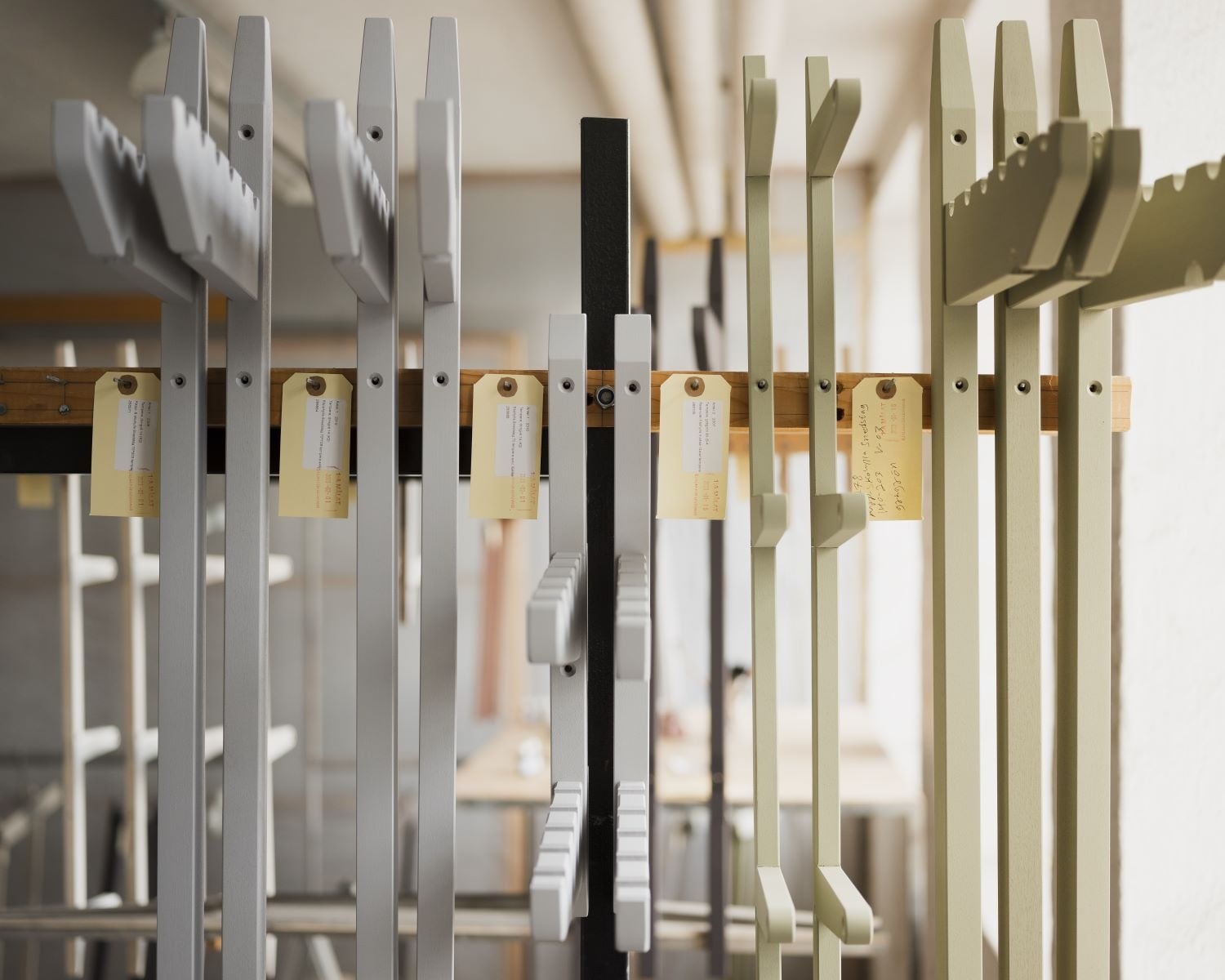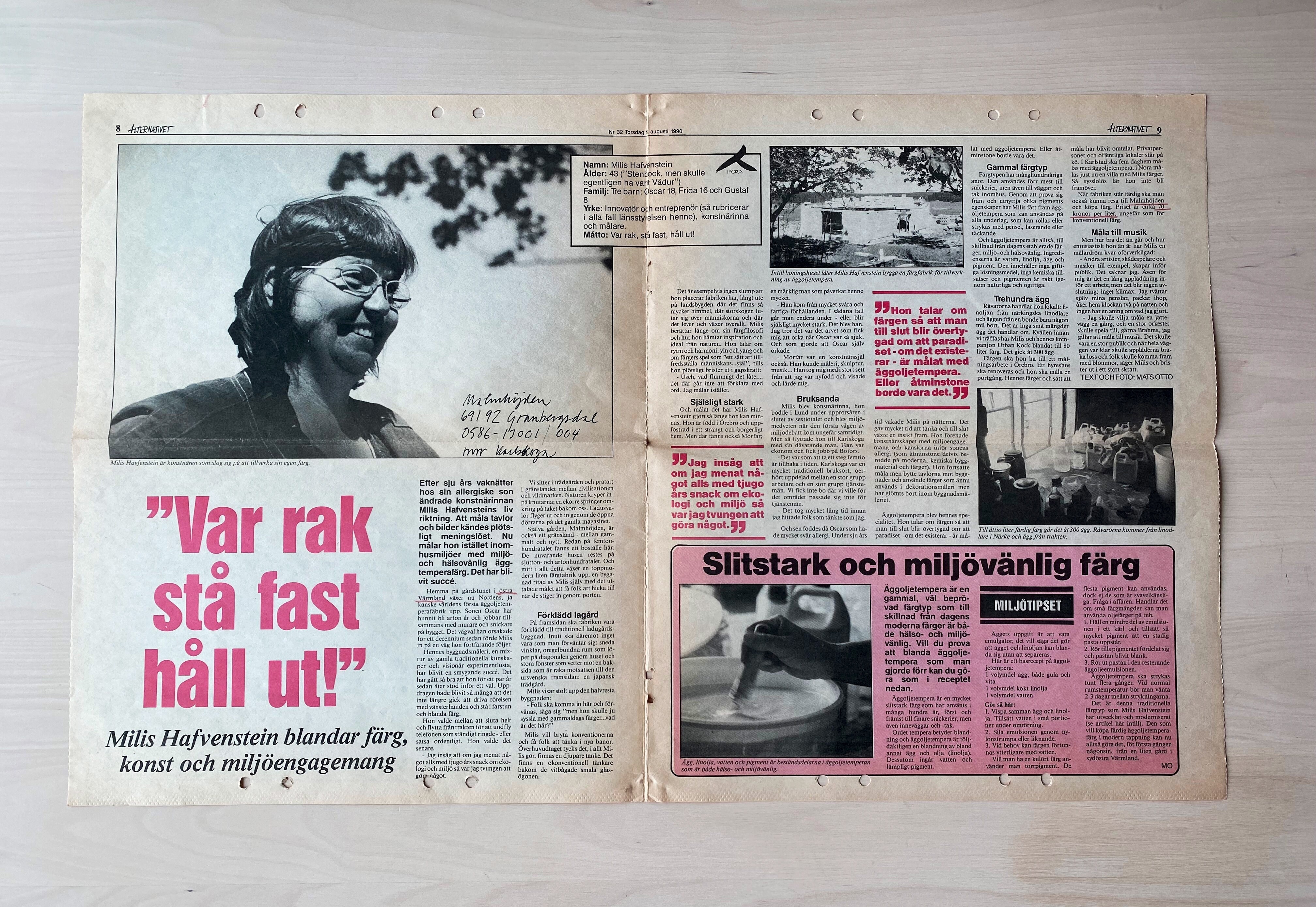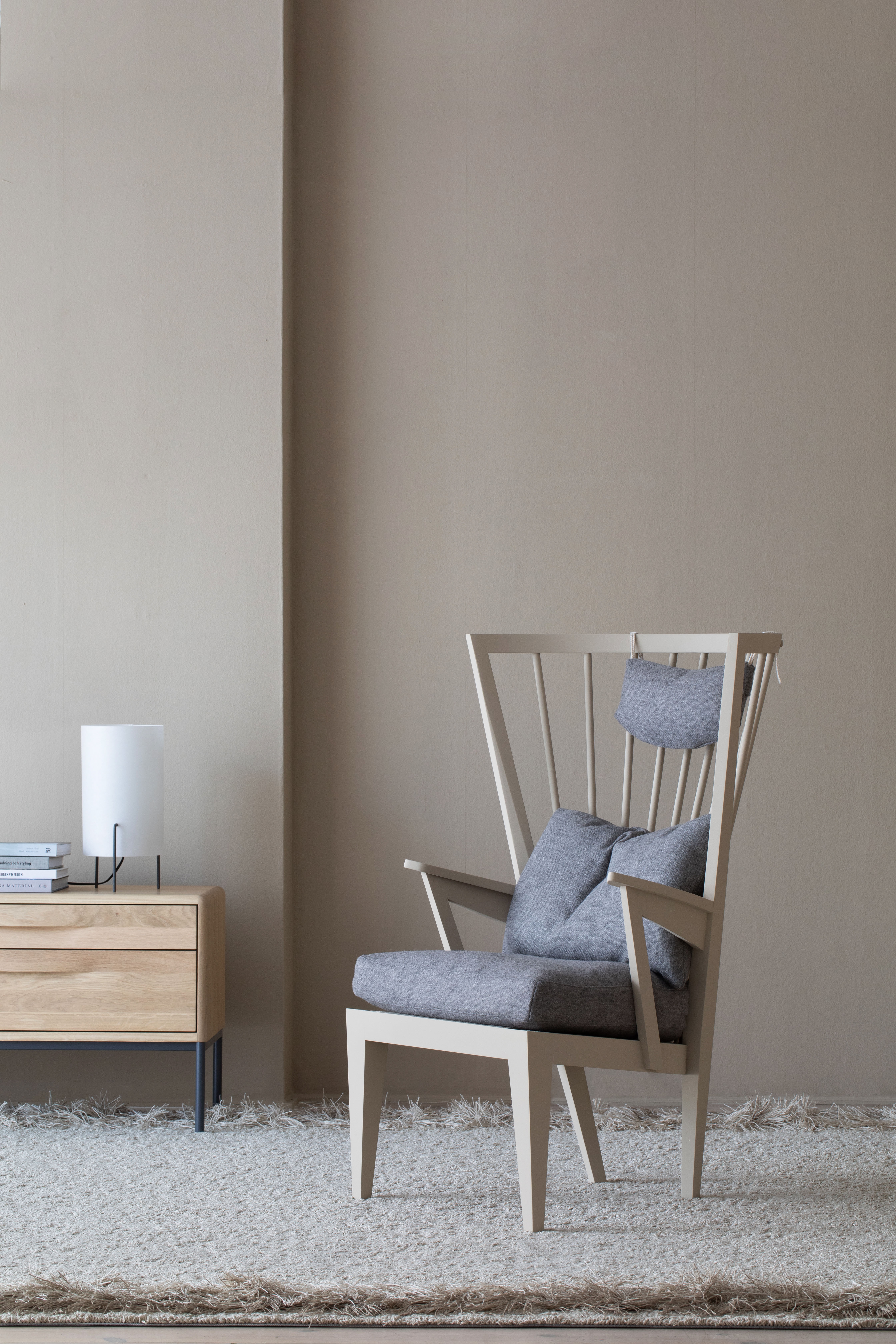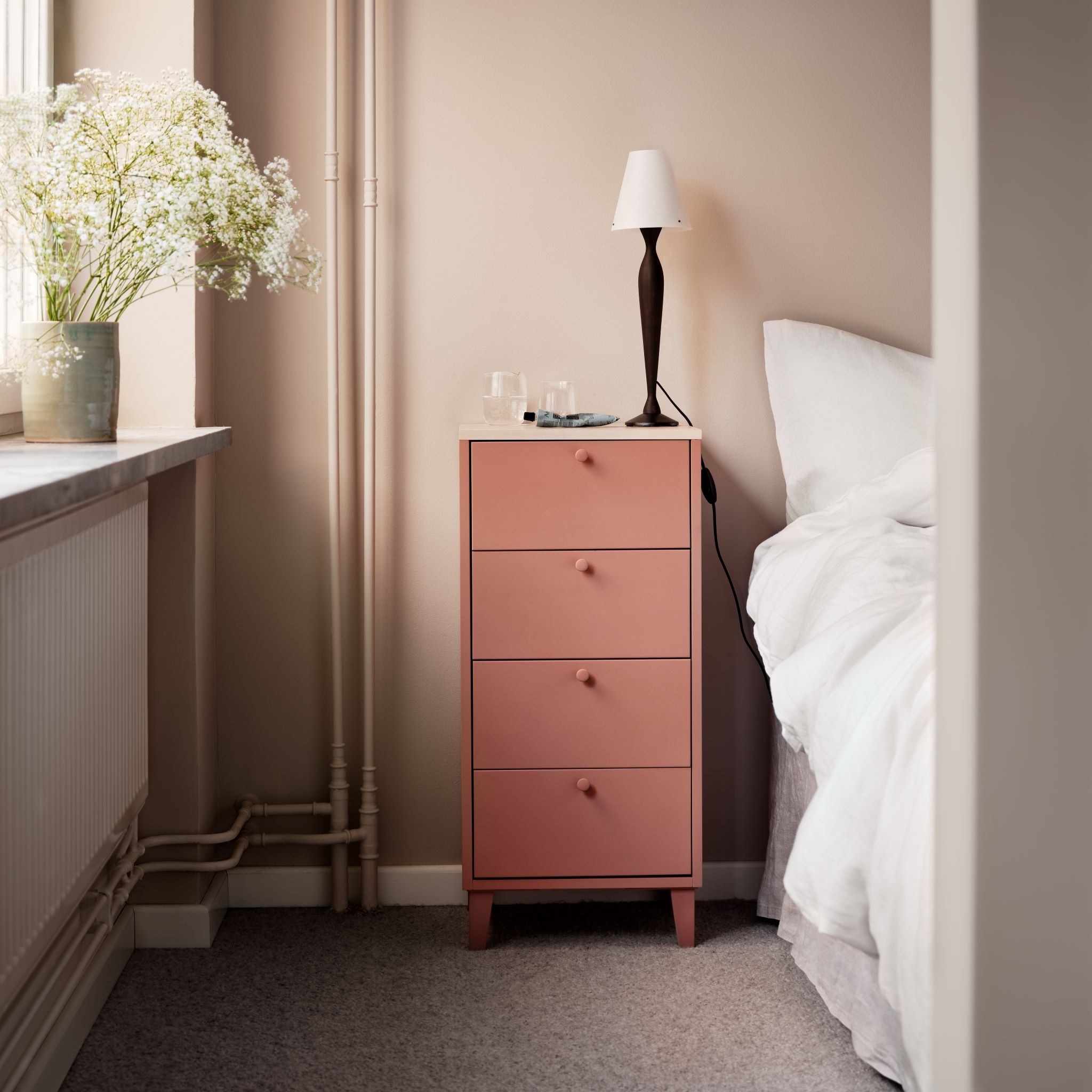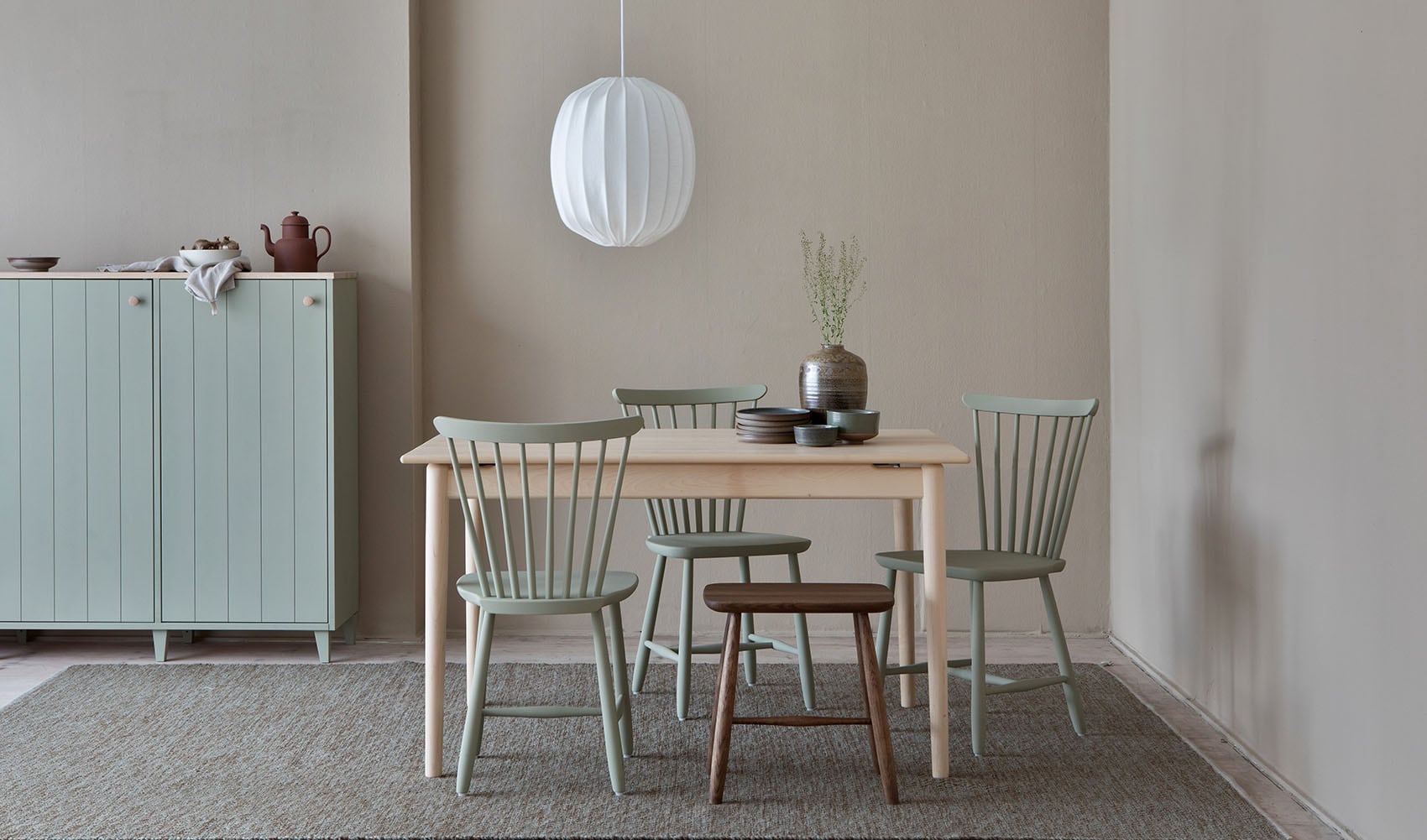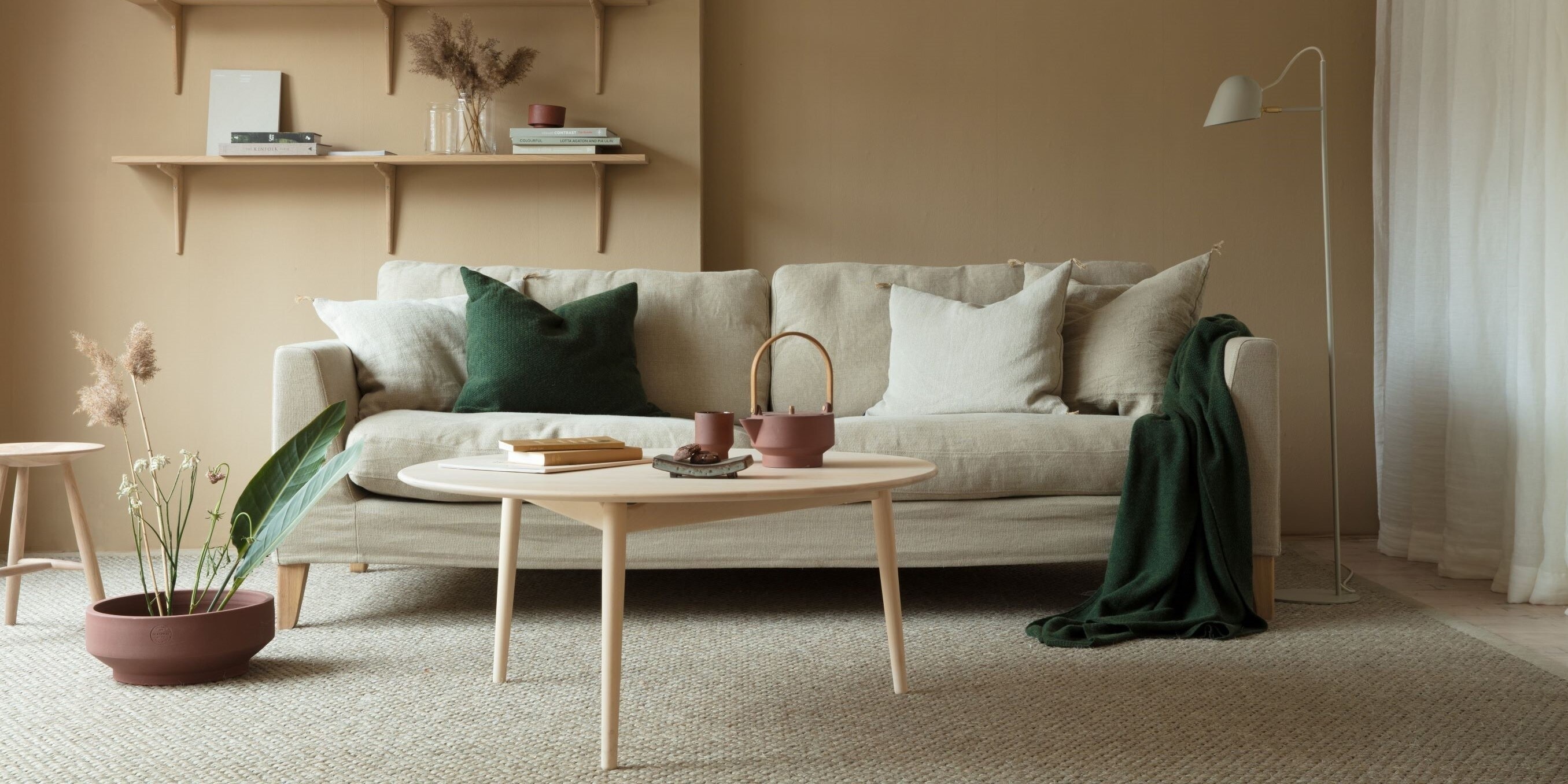But it wasn't a sustainable situation to manage the painting myself in the basement of the residential building, and the German natural paint didn't feel quite right. That's when Nirvan remembered that article from 1990. His curiosity about egg tempera, which Milis Ivarsson described with such convincing enthusiasm, grew. Nirvan called directory assistance and got Milis's phone number. After describing his business, Milis surprisingly replied that it was funny he called just then because she was going to Lund the next day - for the first time in ten years. What a coincidence! And when Milis arrived the next day at the house in Lund where Nirvan lived at the time, she spotted a cabinet and exclaimed, "Is it YOU who made that cabinet?" The cabinet in question was one Nirvan had made during his furniture carpentry training and was displayed at an exhibition at Läckö Castle. Milis had visited the exhibition, was impressed by the cabinet, and immediately recognized it in Nirvan's home. With this first meeting, a multi-year collaboration between Norrgavel and Ovolin, the paint company founded by Milis, began. Milis swept into Nirvan's life with her strong personality and opened doors to a completely new approach to color.
– Previously, I had been interested in color in an intellectual and technical manner, but I understood then and there that my knowledge of color was extremely basic. For me, color was an NCS number. Milis introduced me to a whole new way of thinking. She saw color more as a sculptural material, as an experience that one sculpts. Not as a flat surface but more as a materiality with which one works to create spatial volumes. She liked to experiment simultaneously with different shades of color to achieve a stronger sense of light in the room. Milis lives color. She IS color. She has an incredibly keen eye for color that is not only intuitive but also analytical," says Nirvan.
“For me, color was an NCS number. Milis introduced me to a whole new way of thinking.”
And Nirvan trusted Milis very much. It felt completely natural to start experimenting with pure egg tempera on Norrgavel furniture and abandon the German natural paint. But it was a challenge to start painting furniture with egg tempera. The challenge included choosing colors that behaved in a manageable way and also had reasonable oxidation times. The properties of the paint vary depending on which pigments are included in each color. A research project was initiated with the University of Växjö where different methods to accelerate the oxidation of the paint were tested. When pine oil was added, it turned out that the paint became more manageable and the oxidation time was shortened. However, the slow oxidation of egg tempera has its advantages. It provides a very durable surface that does not flake or crack. Instead, the paint surface wears down over time due to wear, resulting in a beautifully patinated surface.
In addition to color, Milis was also knowledgeable in the field of textiles, and linen was a favorite material of hers. Norrgavel began purchasing linen of various thicknesses from linen weavers and had the fabrics dyed at Swedish dye houses. It was Milis who determined the colors. These linen fabrics were then used for table and bed linens and to upholster Norrgavel's stuffed furniture. In Nirvan's office, there is a daybed with a cushion upholstered in one of the fabrics from that time. The blue-purple color is as beautiful today as it was three decades ago when the cushion received its covering. And despite years of use, the fabric still looks fantastic.
“The blue-purple color is as beautiful today as it was three decades ago when the cushion received its covering.”
The close collaboration between Milis and Norrgavel continued until the turn of the millennium when they professionally parted ways.
